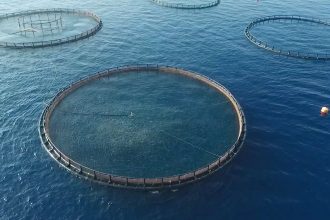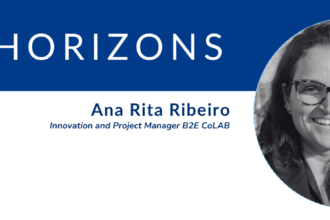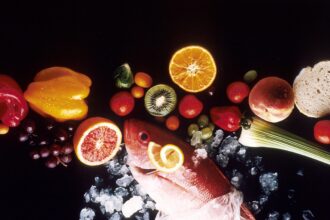B2E Technological Sonar Initiative #31
This May, we present a concise overview of some intriguing discoveries we’ve encountered! There’s a new slick way to spot antibiotics in fish, a neat trick for cleaning up fish farming water using a type of algae, and even a digital idea to figure out how much carbon aquaculture is chucking out. We found out some substances from sea sponges might have cancer-fighting potential! We also talk about some chitosan-based compounds that could help clear toxins from shellfish. And to wrap it up, we’re looking into how different drying methods can change the chemical makeup of algae and how gene editing could help with food safety with lab-grown fish. Don’t miss out!
AQUACULTURE
Determination of Multiclass Antibiotics in Fish Muscle Using a QuEChERS-UHPLC-MS/MS Method
The QuEChERS method combined with ultra-high-performance liquid chromatography tandem mass spectrometry was used to detect 10 multiclass antibiotics in farmed fish muscle tissue (European sea bass and gilt-head sea bream). The method showed high recovery rates (mostly 70-120%) and met EU maximum residue limit standards. Analysis of twenty fish samples found most antibiotics absent, with the exception of oxolinic acid and tilmicosin in European sea bass, both below the method’s quantification limit.
NCBI
Discover more here.
Use of a by-product of Chlorella ellipsoidea biodiesel production for aquaculture discharge treatment
Filters comprising a Chlorella ellipsoidea by-product (lipid-free biomass) for aquaculture wastewater treatments and methods for removing ammonia, phosphorous, and organic matter from aquaculture wastewater using such filters. The filters have multiple layers of a compressed Chlorella ellipsoidea lipid free biomass by-product of biodiesel production, wherein each of the multiple layers is separately changeable.
Espacenet
Discover more here.
A Digital Intelligent Aquaculture Carbon Accounting and Carbon Sink Capacity Assessment Methodology
The present invention relates to a digital aquaculture carbon accounting and carbon sink capacity assessment method, comprising: calculating the total carbon source and total carbon sink of various aquaculture species in one or more aquaculture waters, and digitally processing the total carbon source and total carbon sink of various aquaculture species in each aquaculture water to obtain a net carbon sink matrix.
Espacenet
Discover more here.
LIVING MARINE RESOURCES
Meroterpenoids from Marine Sponge Hyrtios sp. and Their Anticancer Activity against Human Colorectal Cancer Cells
Two new meroterpenoids, hyrtamide A (1) and hyrfarnediol A (2), along with two known ones, 3-farnesyl-4-hydroxybenzoic acid methyl ester (3) and dictyoceratin C (4), were isolated from a South China Sea sponge Hyrtios sp. Their structures were elucidated by NMR and MS data. Compounds 2-4 exhibited weak cytotoxicity against human colorectal cancer cells (HCT-116). Furthermore, compounds 3 and 4 significantly suppressed the invasion of HCT-116 cells while also downregulating the expression of vascular endothelial growth factor receptor 1 (VEGFR-1) and vimentin proteins, which are key markers associated with angiogenesis and epithelial-mesenchymal transition (EMT).
NCBI
Discover more here.
The Potential of Chitosan-Based Composites for Adsorption of Diarrheic Shellfish Toxins
In this study low-cost composites for the adsorption of Okadaic acid (OA) in saltwater were produced and tested. Composites were made using chitosan of different molecular weights (CH-LW and CH-MW), activated carbon (AC), and montmorillonite (MMT). Characterization showed varying interactions between CH-LW and CH-MW with AC and MMT. Among the tested composites (CH-LW/AC, CH-MW/AC, CH-MW/AC/MMT, CH-MW/MMT), CH-MW/MMT exhibited the lowest OA adsorption efficiency due to structural reasons, while CH-MW/AC showed the highest OA adsorption.
NBCI
Discover more here.
The Impact of Different Drying Methods on the Metabolomic and Lipidomic Profiles of Arthrospira platensis
In this work, the impacts of eight different drying methods on the metabolome and lipidome of Arthrospira platensis were investigated. The studied drying methods were freeze drying (FD), sun drying (SD), air drying at 40ºC and 75°C (AD’ and AD″), infrared drying at 40ºC and 75°C (IRD’ and IRD″), and vacuum drying at 40ºC and 75°C (VD’ and VD″). The results showed that except for FD method, recognized as a control, the most protective method was AD’. Contrary to this, VD’ and VD″, under the conditions used, promoted the most intense degradation of valuable metabolites.
NCBI
Discover more here.
MARINE BIOTECHNOLOGY
Why gene editing can help aquaculture enhance global food security
Genome edited fish are already being grown by commercial aquaculture operators in Japan, and the technology has huge potential to enhance the sector’s environmental management, productivity and disease resistance.
TheFishSite
Discover more here.
Preparation method of cell cultured fish with fish muscle-mimicking muscle shape using 3D bioprinting technology and cell cultured fish prepared thereby
Provided are a preparation method of an edible cell cultured fish that can implement an actual fish muscle shape and mouthfeel, and a cell cultured fish prepared thereby, by using 3D bioprinting technology. The invention comprises the steps of mixing cells for cell cultured fish and the edible bioink.
Espacenet





